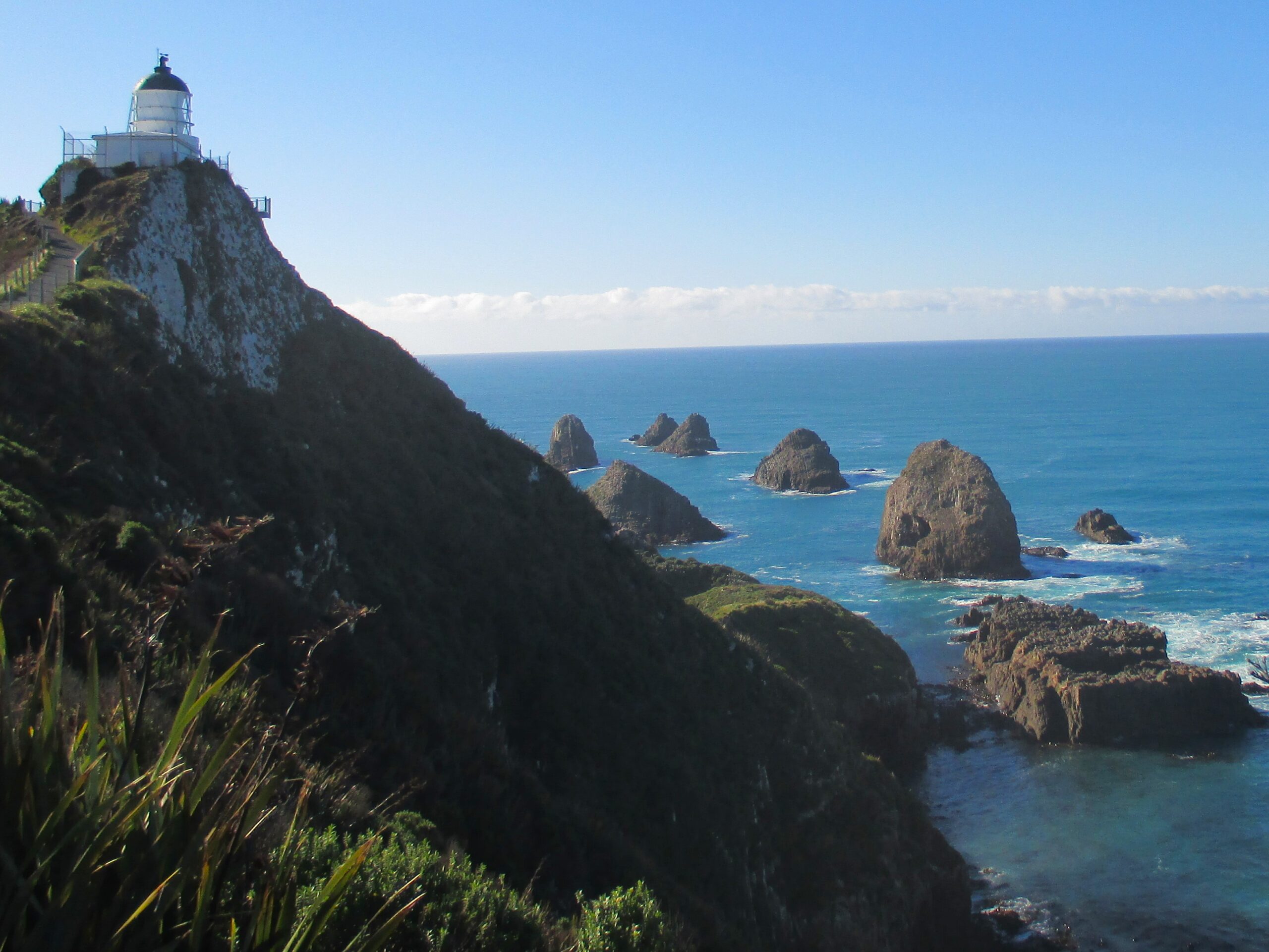Road trip: the South Island of New Zealand
Part four
Next up was the Catlins, on the southern coast of the South Island. From Otago Peninsula it is around 90 minutes of driving – which, I find, is a manageable amount of time to be in a car. Driving between an hour or two helps is more sustainable, especially on a long journey. Stopping more frequently than that, as tempting as it can to explore every new location, makes for slow progress. On the other hand, if driving for too long, weariness sets in. Introducing well-timed breaks at scenic spots to explore is the ideal way to manage a road trip.
The first night in the Catlins, at Kaka Point, was the most scenic overnight stay so far. There, the ocean meets a wide, curved bay, in the middle of an open, uninterrupted stretch of coastline, visible for miles in both directions. This is another illustration of the joys of road trips, and the flexibility of sleeping in the car – to wake up to scenes like this.

Nearby is Nugget Point, where the cliffs rise high, and ‘nuggets’ of rock rise out of the water, forming columns that head out to sea. Of all the lighthouses on the islands of this country, the one at Nugget Point could claim to have the nicest location. It was a lovely place for a stroll, on this mild morning, and feel the fresh sea breeze. Time away from the car, to stretch out my body, is essential for me on road trips. This was a perfect start to my day.
The entire Catlins region is blessed with numerous beaches and bays. You could easily spend two weeks here: exploring, walking, swimming, surfing, kayaking, or relaxing. My desire to see as much of the South Island as possible meant I had only one day to explore.


Surat Bay Beach is one such place to enjoy a long walk. A river meets the sea, and an estuary has formed, creating a divide in the beach. The flat beach makes the mile walk along it, to the east, an easy one. Perhaps predictably, I choose the location because of the opportunity for wildlife. And the beach transformed into the set of a nature documentary.
The first encounter, halfway up the beach, was with a gigantic sea lion, sprawled over the sand. While I made sure to give it space when approaching, it momentarily looked around and lifted its body up. It showed off its impressive size, yawned, then fell back asleep, seemingly indifferent to human presence.
Then at the end of the beach, a group of sea lions had gathered. At the forefront, a male and female appeared to have a reunion, calling loudly to each other, and flapping their fins, before shuffling towards each other, and lying together side by side. Quite the romance.





The rest of the day was spent trekking to four different waterfalls, en route to Invercargill. Purakaunui Falls was the first, that has a nice walk through the trees to get there. You can hear the waterfall long before you can see it, due to the volume of water crashing down. It is layered, with shelves of rock, and the falls widen as it descends.
The second, Mclean Falls, is an impressive display, and possibly the most photogenic. The water falls from high, into several pools below. The third, Koropuku Falls, I found more enjoyable for the stroll through the forest to get there, with tree branches hanging from above, mimicking a green nature tunnel.
Last and least, the fourth is the ironically named Niagara Falls, and it barely constitutes a waterfall. If you have time, and think you will be amused, stop by. Otherwise, don’t waste your energy – you won’t be missing much.


At some point on a road trip, you are going to need to think about finding a hot shower. In places like New Zealand, you may find public showers on a beach – as is the case in Kaikoura – although the water wasn’t warm. At public swimming pools, you can pay for a shower. And don’t worry about getting any funny looks from the receptionist, it’s not uncommon in Oceania. I usually prefer to combine a shower with a swim in the pool – it’s another way to unwind after long stints in a car.
So, after a swim and pizza in Invercargill, the night was spent at Bluff, one of the southernmost points on the mainland. It is also the departure point for Stewart Island, the last remaining place to see the kiwi bird in the wild. Sadly, there wasn’t enough time in the itinerary to squeeze that in. But there was plenty more to see on the latter parts of this trip.
